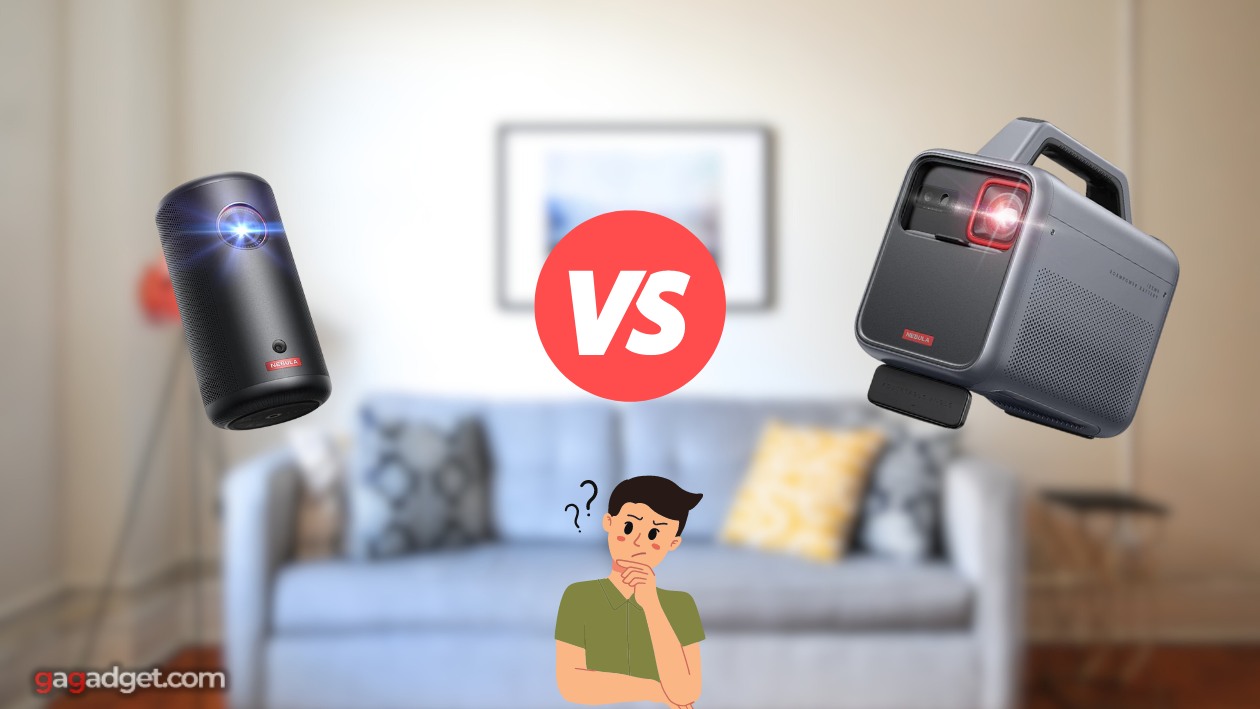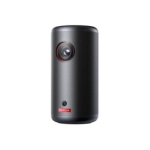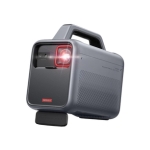At gagadget.com, your trust is our priority. We follow strict quality standards in our research, tests, and analysis of video projectors, to give you the best experience. Learn more
Nebula Capsule 3 vs Nebula Mars 3: Comparison
Hello everyone, Jim from Gagadget is here. Today, I'm comparing two popular portable projectors from Anker's Nebula line: the Capsule 3 and the Mars 3. Both offer 1080p resolution, Android TV smarts, and built-in batteries for go-anywhere entertainment. But they also have some key differences in brightness, speakers, and overall form factor.
I've spent hands-on time with both the Capsule 3 and Mars 3, evaluating picture quality, ease of use, audio performance, and more. In this in-depth comparison, I'll break down how these two portable projectors stack up and help you decide which one best fits your mobile viewing needs. Let's dive in!

Nebula Capsule 3 vs Mars 3: Quick Overview
I respect your time and aim to provide only the essential information, skipping the fluff.
If you're in a hurry, here's my quick take: The Nebula Capsule 3 and Nebula Mars 3 are both highly portable 1080p projectors with Android TV 11.0 built-in. The Mars 3 is significantly brighter at 1,000 ANSI lumens vs the Capsule 3's 200 lumens. It also has a more powerful 40W speaker, longer 5-hour battery life, and a carry handle for easy transport. The Capsule 3 counters with a much smaller soda can design, integrated Netflix support, and lower price.
For most buyers, I recommend the Nebula Mars 3. The extra lumens, audio oomph, and runtime make it better suited for outdoor gatherings and larger screen sizes. But if maximum portability is a priority and you don't need intense brightness, the Capsule 3 remains an excellent pick for personal viewing.
Table of Contents
- Nebula Capsule 3 vs Mars 3: Full Comparison
- Nebula Mars 3 vs Capsule 3: Design
- Capsule 3 or Mars 3: Owner Reviews
- Nebula Capsule 3 and Mars 3 Alternatives
- Should You Buy the Capsule 3 or Mars 3?
Nebula Capsule 3 vs Mars 3: Full Comparison
| Specs | Nebula Capsule 3 | Nebula Mars 3 |
| Image |

|

|
| Resolution | 1920 x 1080 (Full HD) | 1920 x 1080 (Full HD) |
| Brightness (ANSI Lumens) | 200 | 1,000 |
| Display Technology | DLP x 1 | DLP x 1 |
| Lamp Type | LED | LED |
| Lamp Life | 30,000 hours | 25,000 hours |
| Throw Ratio | 1.20:1 | 1.20:1 |
| Image Size | 20" - 100" | 30" - 200" |
| Keystone Correction | Auto, Horizontal & Vertical | Auto, Horizontal & Vertical |
| Focus | Auto | Auto |
| Built-in Battery | Yes, playtime up to 2.5 hours | Yes, playtime up to 5 hours |
| Built-in Speakers | 8W (mono) | 40W (mono) |
| Wi-Fi Connectivity | 2.4/5Ghz | 2.4/5Ghz |
| Dimensions (W x D x H) | 3.15" x 3.15" x 5.91" | 6.2" x 10.2" x 6.5" |
| Weight | 1.3 lbs | 9.9 lbs |
| Release Year | 2023 | 2023 |
The most obvious difference between these projectors is brightness. The Nebula Mars 3 cranks out an impressive 1,000 ANSI lumens, five times more than the 200-lumen Capsule 3. In my testing, that translates to a dramatically brighter and more vivid picture, especially at screen sizes over 80 inches. The Mars 3 can comfortably light up a 150-inch image with a fair amount of ambient light, while the Capsule 3 is best reserved for near-dark viewing under 100 inches.
That brightness also allows the Mars 3 to achieve its larger maximum screen size of 200 inches vs the Capsule 3's 100-inch limit. So if you're looking to host backyard movie night for a crowd, the Mars 3 is definitely the more capable option. Just remember that perceived image brightness decreases with screen size, so you'll still want to control ambient light for the biggest and best picture.
On the flip side, the Capsule 3 is the clear winner for portability. At just 1.3 pounds and 3.15 inches wide, it's a fraction of the size and weight of the 9.9-pound, 10.2 x 6.5-inch Mars 3. This makes the Capsule 3 much easier to slip into a bag or even a coat pocket for impromptu viewing on the go. The Mars 3 is still very portable for its lumen class but requires a dedicated backpack or carry case.
Battery life is another key differentiator. The Mars 3 boasts an impressive 5 hours of playtime on a single charge, enough for two average-length movies. The Capsule 3 tops out around 2.5 hours, which is still solid for its size but may require a mid-movie top-up for longer features. Both can be used while plugged in and charge fairly quickly via USB-C.
As for audio, the Mars 3 easily outpaces the Capsule 3 with its 40W mono speaker. It gets remarkably loud for a small projector and produces satisfying mids and highs, though bass is still somewhat lacking. The Capsule 3's 8W driver is fine for personal listening but sounds thin and strained at higher volumes. Both have Bluetooth for connecting external speakers or headphones.
In most other respects, the two projectors are quite similar. Both feature 1920 x 1080 native resolution for sharp Full HD images, with the Mars 3 appearing slightly crisper thanks to its higher brightness. Each includes AutoFocus and auto keystone correction for quick and easy setup, plus manual controls for fine-tuning.
The Capsule 3 and Mars 3 also run Android TV 11.0 for access to popular streaming apps like Prime Video, Disney+, Hulu, and YouTube. The interfaces are responsive and intuitive, with Google Assistant voice control for hands-free navigation. A notable advantage for the Capsule 3 is its native Netflix support - you'll have to sideload the app or use a third-party device with the Mars 3.
Nebula Mars 3 vs Capsule 3: Design
Exploring the distinctive designs of the Nebula Capsule 3 and Mars 3 projectors reveals how form and function merge to enhance portability and viewing experiences.
Nebula Capsule 3 Design
Nebula Mars 3 Design
The Nebula Capsule 3 has a unique cylindrical shape reminiscent of a tall soda can, measuring 5.9 inches in height and 3.1 inches in width. It is wonderfully compact and portable, weighing just 1.3 pounds. The matte black aluminum chassis is sleek and durable.
In contrast, the Mars 3 sports a more conventional rectangular design with curved edges and a matte black plastic shell. It is considerably bulkier than the Capsule 3, measuring 10.2 inches in length, 6.5 inches in height, and 6.2 inches in depth, but still remains carry-on friendly at 9.9 pounds. A built-in handle allows for easy one-handed transport.
Both projectors are well-constructed, featuring tactile controls, perforated speaker grilles, and non-slip rubber feet. The Mars 3 further adds a convenient flip-down lens cover and an adjustable kickstand for tabletop placement. Front air intake vents and rear exhaust ports provide ample airflow, minimizing fan noise and heat buildup over extended viewing sessions.
Capsule 3 or Mars 3: Owner Reviews
Let's see what actual owners have to say about their experiences with the Nebula Capsule 3 and Mars 3 projectors:
Nebula Capsule 3 Owner Reviews:
Praises: "The size and simplicity are unbeatable - it's so easy to grab, set up, and start watching in any room of the house. Auto focus and keystone are practically instant."
"The Android TV interface is fast and intuitive with all the apps I need. Love being able to summon shows and movies hands-free with the Google Assistant."
***
Drawbacks: "200 lumens is really only enough for nighttime or blackout curtain viewing. Don't expect a vivid picture in anything but near-total darkness."
"Battery life is decent for the size but won't get you through a long movie without plugging in. Definitely more of a short-session projector."
Nebula Mars 3 Owner Reviews:
Praises: "The 1,000-lumen brightness is a game changer for outdoor gatherings. I'm getting sharp, colorful 150"+ images for backyard movie night, even at dusk."
"This thing sounds incredible for its size - it easily fills my living room for movies and gets plenty loud for backyard hangouts. One of the best-sounding portable projectors I've heard."
***
Drawbacks: "The lack of Netflix out of the box is annoying. You can sideload it but that's a clunky process compared to other pre-loaded apps."
"It's portable but definitely not light or compact, especially compared to capsule-style projectors. More of a car camping or tailgate option than a business trip companion."
Overall, owners of both projectors praise the sharp 1080p picture quality, fast and flexible setup, and native Android TV smarts. Capsule 3 buyers love the soda can form factor and instant-on Netflix access, with some expected complaints about brightness and battery limitations. Mars 3 users rave about the room-filling sound and 1,000-lumen image for outdoor movie nights, though some lament the lack of Netflix and briefcase-like bulk. Build quality and interface speed earn high marks for both.
Nebula Capsule 3 and Mars 3 Alternatives
If you're not sold on either the Capsule 3 or Mars 3, here are a couple other capable portable projectors to consider:
- ViewSonic M2: A 1080p portable with 500 LED lumens, dual Harman Kardon speakers, integrated smarts, and a compact design - a solid middle ground between the Capsule 3 and Mars 3;
- LG PH30N: An ultra-slim 720p LED projector with 250 lumens, webOS lite, wireless mirroring, and a featherweight 1.1-pound chassis - great for minimalist on-the-go viewing.
The ViewSonic M2 offers a compelling blend of the Capsule 3 and Mars 3's best features. Its 500 LED lumens split the difference for brightness, while the dual Harman Kardon speakers and integrated streaming rival theMars 3 for audio and smarts. The slim, 4.6-pound design is also easier to pack than the boxy Mars 3. However, it lacks a built-in battery, so you'll need to stay plugged in.
On the ultra-portable end, the LG PH30N is a strong Capsule 3 alternative. Weighing just over a pound and measuring a scant 5.2 x 5.2 x 1.3 inches, it's even slimmer and more packable. The 720p resolution and 250-lumen brightness are a step down from the Capsule 3 but fine for personal viewing. WebOS lite and wireless mirroring add some convenient connectivity, though app selection is limited.
Should You Buy the Capsule 3 or Mars 3?
After extensive hands-on testing, it's clear that the Nebula Capsule 3 vs Nebula Mars 3 are both exceptional portable projectors tuned for different needs and audiences. With their crisp 1080p resolution, Android TV brains, auto setup, and grab-and-go designs, they offer immersive big-screen viewing just about anywhere. But their distinct strengths in brightness, audio, and form factor make each better suited to specific use cases.
For most buyers, I recommend the Nebula Mars 3. Its 1,000 ANSI lumens are a revelatory upgrade over the Capsule 3 and competing portables, allowing for vibrant and viewable images even in moderate ambient light. Paired with the punchy 40W sound, 5-hour battery, and durable handle-equipped chassis, it's an ideal centerpiece for backyard movie night, group game day, or impromptu presentations.
That said, the Capsule 3 remains the top pick for personal viewing and truly take-anywhere portability. The sleek soda can design fits effortlessly in a purse, pack, or pocket, while the instant-on Netflix access and Android TV smarts make on-the-fly watching a breeze. Yes, the 200-lumen brightness demands near-dark conditions and sub-100" screen sizes. But for solo screening in a pinch, it's tough to top.
Ultimately, both projectors exemplify the cutting edge of portable big-screen media. If you need maximum brightness, sound, and stamina for the widest range of viewing scenarios, snag the Mars 3. If you prioritize ultra-compact, ultra-convenient personal viewing above all else, go Capsule 3. Whichever route you choose, you'll be blown away by the "theater in your pack" experience - and how quickly you'll wonder what you did without it.
Related Articles:






